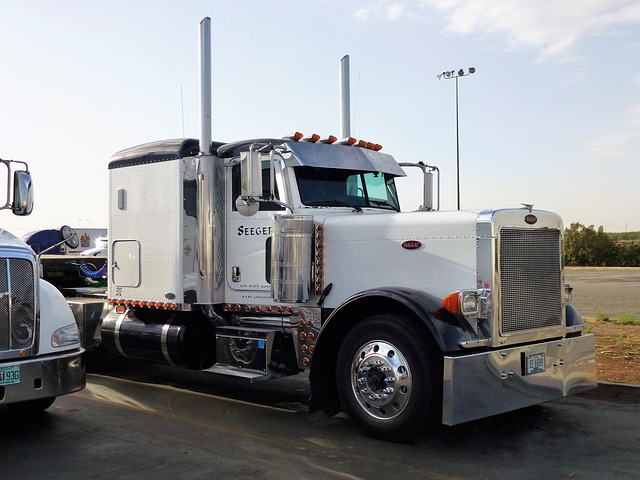Looking to register your car in California? This comprehensive guide walks you through every step, from understanding the requirements for car registration in California to completing the DMV VIN verification process. We’ll help you gather the necessary documents, prepare your vehicle, and navigate the online or in-person registration. Finally, we cover post-registration essentials like insurance, tags, and maintenance.
- Understand the Requirements for Car Registration in California
- Gather Necessary Documents for DMV VIN Verification
- Prepare Your Vehicle for Inspection and Title Transfer
- Complete the DMV Registration Process Online or In-Person
- Post-Registration Steps: Insurance, Tags, and Maintenance
Understand the Requirements for Car Registration in California

Before you begin the registration process, it’s crucial to understand the requirements for car registration in California. The state Department of Motor Vehicles (DMV) imposes specific guidelines that must be met before a vehicle can be legally registered and operated on public roads. One of the key steps is the DMV VIN verification, which ensures that your vehicle matches the information provided by the manufacturer. This process typically involves checking the Vehicle Identification Number (VIN) against records to confirm its authenticity and condition.
Additionally, California offers options like mobile VIN inspection or mobile VIN verification for added convenience. These services allow you to have a trained professional come to your location to conduct the necessary checks, saving you time and effort. Remember, adhering to these requirements is essential for a smooth registration process and ensuring your vehicle complies with state regulations.
Gather Necessary Documents for DMV VIN Verification

Before heading to the DMV for car registration, ensure you have all the essential documents required for a successful dmv vin verification. This process is crucial for establishing ownership and ensuring your vehicle’s history is accurately recorded. Gather the following: your valid driver’s license or state ID, proof of insurance, and the vehicle’s title (if applicable). Additionally, you’ll need to provide a completed Vehicle Registration Application form, which can be obtained from the California DMV website.
For convenience, many individuals opt for mobile vin verification services, allowing them to complete the process without visiting a physical location. These mobile vin inspectors can conveniently assess your vehicle’s information right at your desired spot. This option is particularly beneficial when dealing with busy schedules or remote locations.
Prepare Your Vehicle for Inspection and Title Transfer

Before heading to the California DMV for registration, it’s crucial to prepare your vehicle for both inspection and title transfer. Start by ensuring your vehicle is in good working condition. This includes basic maintenance like up-to-date oil changes, functional lights, and tires in good condition. You should also gather all necessary documents, including your vehicle’s title, proof of insurance, and identification. The DMV requires a thorough inspection to verify the vehicle’s identity using its unique Vehicle Identification Number (VIN). Consider utilizing a mobile VIN inspection or a mobile VIN verifier service to streamline this process before visiting the DMV, as many services offer convenient and accurate VIN verification. This step is essential for a smooth title transfer.
Additionally, make sure you have your old registration and any emissions test results if applicable. A clean bill of health from a recent inspection can expedite the registration process. By preparing these aspects beforehand, you’ll avoid potential delays and ensure a quicker trip to the DMV. Remember, accurate VIN verification through mobile services or otherwise is a key component in successfully registering your vehicle in California.
Complete the DMV Registration Process Online or In-Person

You have the option to complete your California car registration through a convenient online process or by visiting a DMV office in person. Both methods involve several steps, including providing essential documentation and undergoing a vehicle identification number (VIN) verification. For those opting for an online registration, the DMV offers a user-friendly platform where you can input your details, upload required documents, and pay the registration fees digitally. This method is efficient, allowing you to complete the process from the comfort of your home.
On the other hand, visiting a DMV office entails a more traditional approach. You’ll need to bring your vehicle for inspection, along with your necessary paperwork, such as proof of insurance and identification. A skilled DMV agent will conduct a thorough VIN inspection, cross-referencing the provided details against their records to ensure the vehicle’s authenticity and history. This step is crucial in maintaining California’s stringent motor vehicle regulations.
Post-Registration Steps: Insurance, Tags, and Maintenance

After successfully registering your vehicle with the California DMV, there are several essential post-registration steps to complete. One crucial aspect is ensuring your car has the proper insurance coverage. Check with reputable insurers and choose a policy that aligns with California’s minimum requirements for both liability and comprehensive insurance. Keep in mind that proof of insurance is mandatory when registering your vehicle.
Additionally, obtain the necessary tags and stickers for your car. The California DMV will issue license plates, and you must display them on your vehicle at all times while driving. Regularly check and maintain your car to keep it safe and road-ready. This includes completing routine maintenance tasks as recommended by the manufacturer and adhering to safety standards. A mobile vin verifier or conducting a vin inspection can help ensure that any issues are identified early, contributing to a smoother ownership experience.
Registering a car in California involves understanding specific requirements, gathering essential documents for DMV VIN verification, preparing your vehicle for inspection and title transfer, completing the registration process online or in-person, and taking post-registration steps like insuring your vehicle, obtaining tags, and maintaining it. By following these straightforward steps, you can ensure a smooth car registration experience in the Golden State.
